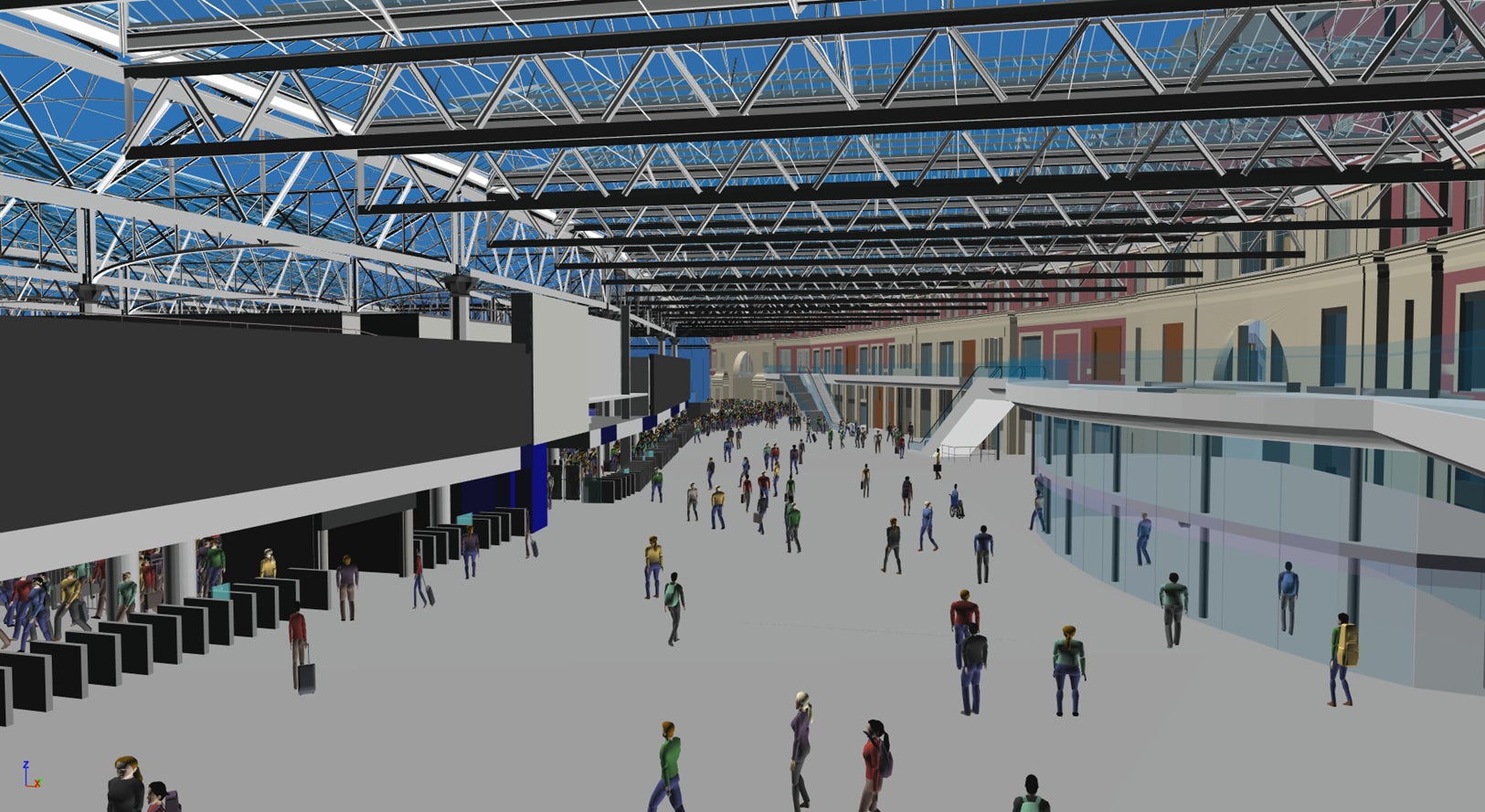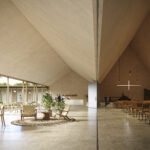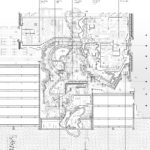Architizer’s Tech Directory is a database of tech tools for architects — from the latest generative design and AI to rendering and visualization, 3D modeling, project management and many more. Explore the complete library of categories here.
Many designers approach the task of modeling as representing a static structure, but what they’re really modelling is a place for things to happen. Thanks to substantial advancements in data processing, tools that can model both a space and the things that happen there are becoming increasingly accessible to architects in the form of behavior modeling software.
Behavior modelling programs employ complex algorithms that predict, with an impressive degree of accuracy, the way people will move through a space under a given set of conditions. They’re most often used to analyze the design of buildings that accommodate large crowds, like transit centers and stadiums, though the range of events and decisions that can be modeled is quickly expanding. This means the range of scales and project types that can be analyzed is expanding as well, increasing the usefulness of these programs to architects who incorporate them into their design process.

Pedestrian simulation on MassMotion; via Oasys
Historically limited to research groups like Space Syntax, behavior modelling applications originated from partnerships between software companies and scientific institutions, such as SimWalk, or from research and development efforts within large companies, such as Flow, developed by engineering giant Arup. The basis of the algorithms used vary slightly from program to program: Legion’s SpaceWorks, for example, is derived from thousands of hours of pedestrian video capture, while programs like STEPS rely on proprietary methods checked against real-world studies and complex building code equations.
What unites these programs is their reliance on agent-based modeling, in which individual people are represented by individual collections of data in a true, one-to-one simulation. Factors such as a desire to pick the shortest distance between two points or avoid long lines are modeled independently across every agent in the simulation. The number of agents modeled and the factors affecting their decisions can range from one to hundreds of thousands, limited only by processing power.

Rendering of Beijing Daxing International Airport; via Skyscraper City
Zaha Hadid Architects’ design for a new airport in Beijing, for example, underwent extensive pedestrian behavior modelling to test for bottlenecks in passenger flow through the large, multi-modal facility. The layout of stairs and escalators in Dattner’s design for one of New York City’s newest subway stations was revised after simulations revealed a more efficient configuration. Even the complex science behind shopping behaviors, such as the degree to which people are attracted to a certain type of store or location, were modeled by a Swiss retail operator to test the design of a new shopping complex inside a former office building.
Like most software these days, behavior modelling programs are also getting exponentially better at what they do. Over roughly the past decade, what used to be two-dimensional plan diagrams have become fully-immersive 3D models with realistic representation tools. Programs like Flow allow for extensive BIM integration, while STEPS has developed a simple, user-friendly interface that allows someone without any knowledge of the program (a client, say) to easily view and control a pre-made simulation in a fully-rendered, interactive presentation.

Rendered simulation in STEPS; via Mott Macdonald
Despite the promise of this technology, behavior modelling in architectural design typically occurs, if at all, as an added consultant service, intended to fix a design rather than generate it. The capabilities of these tools, however, means behavior modelling software holds a lot of potential for architects who decide to use it in-house, as part of their design process, since it supplants intuitive claims about how a space will be used with evidence-based simulations that support such claims.
At the most basic level, behavior modelling could be used by architects to proactively test approaches that justify major design decisions right off the bat, as opposed to spot-fixing problems later through consultant review, or missing issues entirely because an owner elects not to pay for analysis presented as the work of a third-party specialist. At best, behavior modeling could be used to generate major design decisions, partially automating tasks like synthesizing complex program requirements into a schematic layout.
If this technology continues to advance at the current pace, it’s not difficult to imagine a further push into the architect’s purview. Decades-long research into tracking eye movements, for example, paired with equally thorough databases that map a person’s emotions inside the brain, could expand the potential of behavior modeling to justify architectural designs that cause people to feel, or even act, in a certain way.
In any case, the potential this technology holds is the capacity to replace some of the intuitive decisions of architectural design with evidence-based ones. Counter to the disenfranchising overtones of such a notion, this is a net positive for the profession, as it presents an opportunity for the practice of architecture to renew its relevance in a data-driven age. Architects who embrace this, and other evidence-based design tools, could delineate new boundaries for the depth of their work, raising the bar for architectural design quality around the world.
Architizer’s Tech Directory is a database of tech tools for architects — from the latest generative design and AI to rendering and visualization, 3D modeling, project management and many more. Explore the complete library of categories here.









